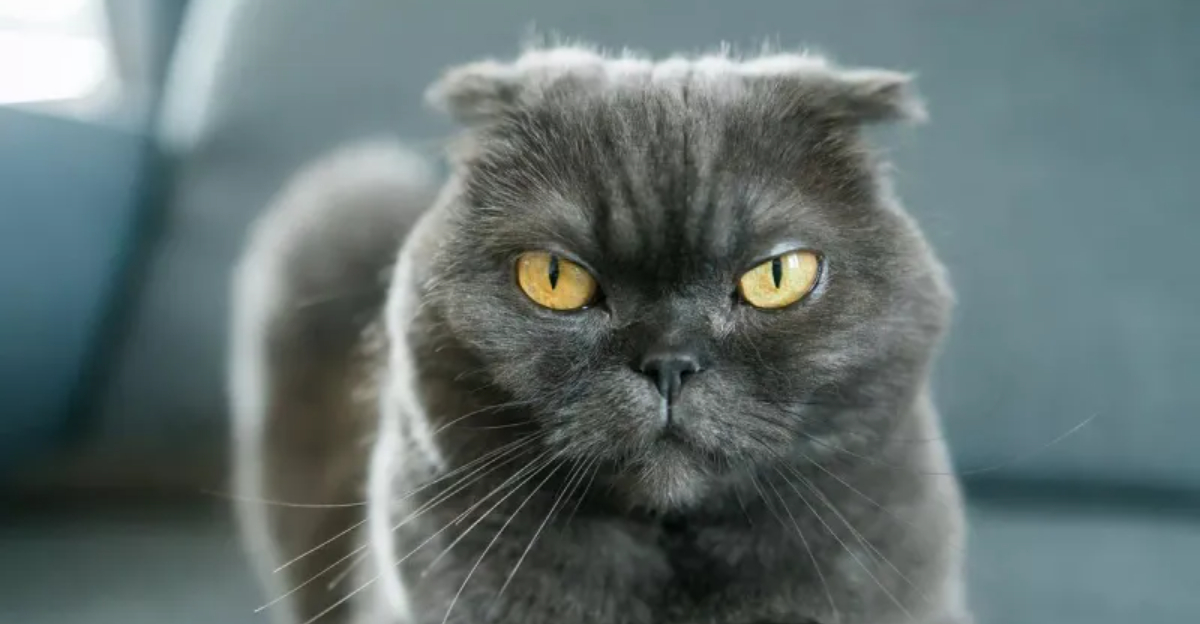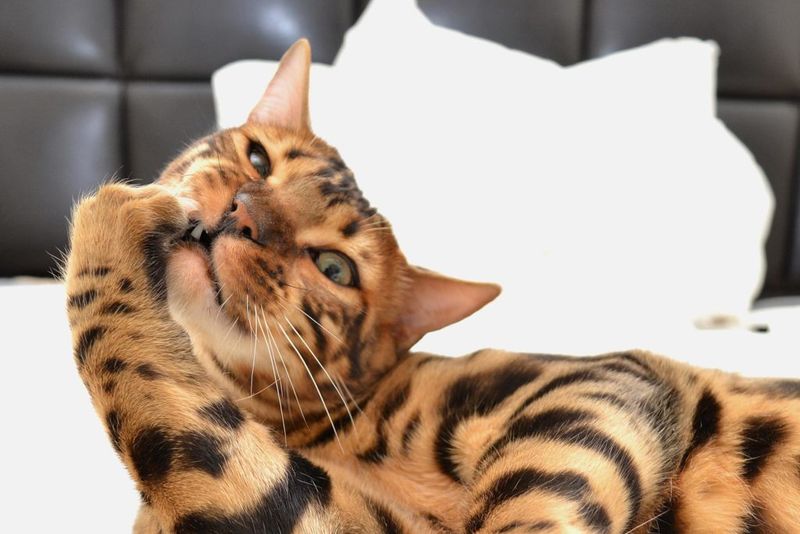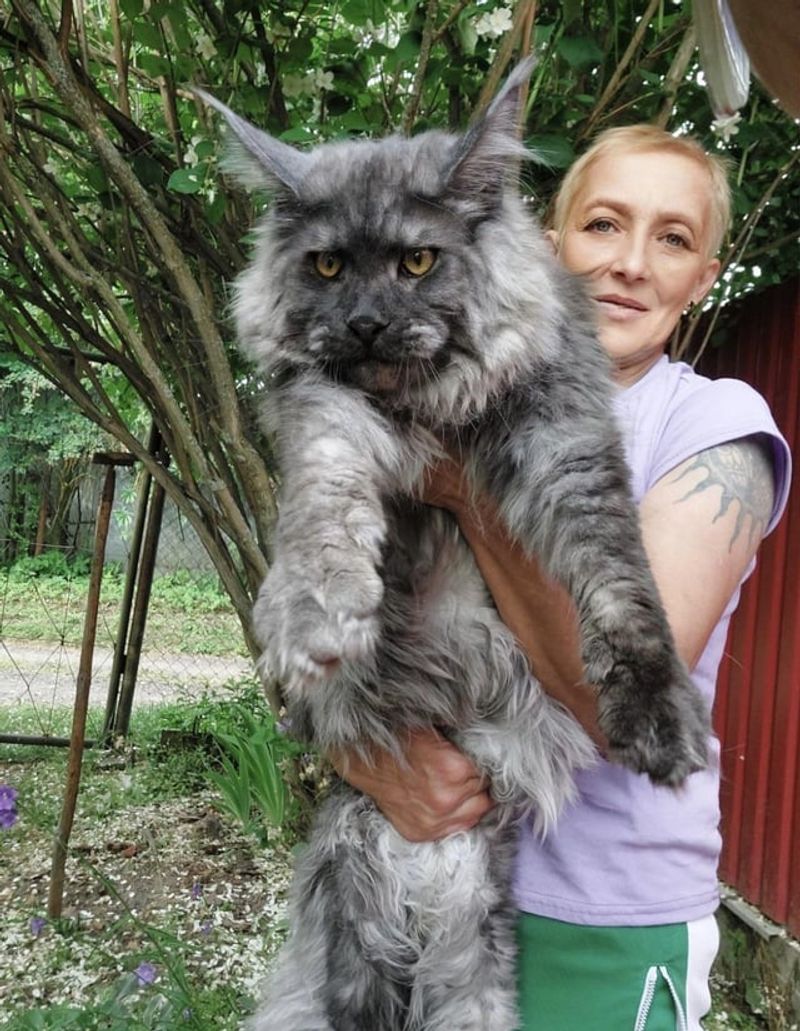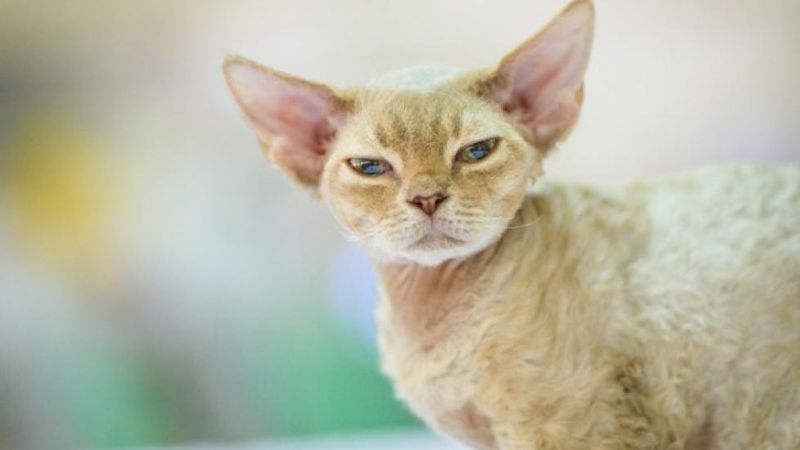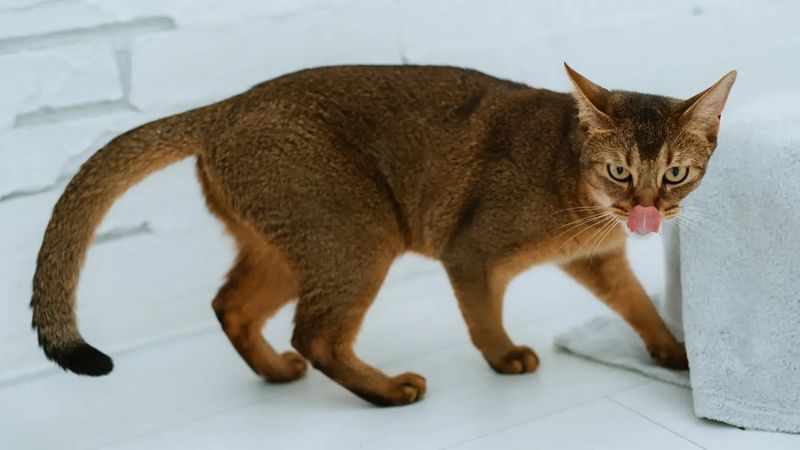📖 Table of Content:
Choosing a cat is a big decision that affects your home life for years. While all cats have their quirks, some breeds have traits that make them particularly challenging for certain owners. From excessive shedding to high-maintenance personalities, these cats might not be the best match for everyone. Here’s my personal list of cat breeds I’d think twice about before bringing home.
1. Sphynx
Hairless doesn’t mean maintenance-free! Sphynx cats require regular bathing to remove body oils that would normally be absorbed by fur. Without this grooming, they develop a greasy film on their skin.
Their lack of fur also means they’re constantly seeking warmth, often burrowing under blankets or demanding to sleep against your body. Your heating bills will likely increase as these cats need warmer environments.
Many people don’t realize Sphynx cats can trigger allergies despite being hairless. The allergic reaction in humans comes from a protein in cat saliva and skin oils, not the fur itself.
2. Bengal
Bengals bring the wild into your living room with their leopard-like appearance and matching energy levels. These cats rarely sit still, constantly climbing, jumping, and exploring every surface in your home.
Their intelligence becomes problematic when bored. A Bengal with nothing to do will create entertainment by opening cabinets, turning on faucets, or dismantling household items. They’ve been known to figure out how to flush toilets repeatedly just for fun.
Vocal and demanding, Bengals communicate their needs loudly and frequently. Their distinctive yowl can pierce through closed doors when they want attention at 3 AM.
3. Persian
The iconic flat face of Persian cats causes more problems than most owners anticipate. Their shortened nasal passages make breathing difficult, especially during hot weather or exercise. Many develop chronic respiratory issues requiring veterinary care.
Daily grooming becomes a non-negotiable chore with Persians. Their luxurious long coat mats easily, and without proper brushing, painful skin conditions develop. Expect to spend at least 20 minutes daily detangling their fur.
Eye discharge is another constant battle with this breed. Their facial structure prevents proper drainage, creating dark tear stains and potential infections if not cleaned multiple times daily.
4. Siamese
Famous for their vocal nature, Siamese cats take communication to exhausting levels. Their distinctive yowl can reach impressive volumes, especially when they feel ignored or want something. Forget peaceful mornings – breakfast demands start early and loudly.
Separation anxiety hits this breed particularly hard. Many Siamese become destructive or depressed when left alone for standard workdays. Their need for constant companionship makes them poor choices for busy households.
Stubbornness defines the Siamese personality. Once they’ve decided on something – whether it’s sleeping on your keyboard or accessing a forbidden room – changing their mind becomes nearly impossible.
5. Maine Coon
Size becomes a genuine issue with Maine Coons, the giants of the domestic cat world. Adult males regularly reach 25 pounds or more, making simple tasks like litter box selection challenging. Standard cat equipment often proves too small for these massive felines.
Their enormous appetites strain pet food budgets considerably. Maine Coons eat significantly more than average cats, and many require premium foods to maintain their massive frames and thick coats.
Furniture and countertops face constant assault from these heavyweight climbers. Their substantial mass means they knock items over frequently, and their powerful jump can send dishes flying when they inevitably explore kitchen counters.
6. Savannah
Hybrid vigor takes on new meaning with Savannah cats, whose wild serval ancestry creates domestic cats with startling abilities. Their incredible jumping height (up to 8 feet vertically) means no shelf or counter remains safe, regardless of placement.
Legal issues complicate Savannah ownership in many areas. These hybrid cats are banned in numerous states and countries, with regulations changing frequently. Even where legal, finding veterinary care can be challenging as many clinics aren’t equipped for their size and temperament.
The price tag alone should give pause – first-generation Savannahs regularly cost $15,000-$20,000, making them one of the most expensive domestic pets available.
7. Scottish Fold
Those adorable folded ears come at a serious health cost. The genetic mutation causing the distinctive ear fold also affects cartilage throughout the body, leading to painful joint problems. Many Scottish Folds develop debilitating arthritis at a young age.
Ethical concerns surround this breed’s continued development. Veterinary organizations worldwide have called for breeding bans, as even responsible breeding practices can’t eliminate the health issues inherent to the ear-folding gene.
Financial considerations become significant with Scottish Folds. Their genetic predisposition to joint problems often results in expensive treatments, special diets, and pain management protocols throughout their lives.
8. Ragdoll
Ragdolls earned their name from going limp when held, but this passive trait extends problematically to self-defense. Their lack of typical cat survival instincts makes them dangerously vulnerable outdoors. They won’t flee from predators or avoid cars effectively.
Health problems plague this breed, particularly hypertrophic cardiomyopathy, a serious heart condition. Genetic testing helps, but doesn’t eliminate the risk completely. Many Ragdolls require cardiac medications and monitoring throughout their lives.
Their size and coat create practical challenges daily. Males often reach 20 pounds, and their semi-long fur requires regular grooming to prevent matting. The combination means more litter, more food, and more maintenance than average cats.
9. Devon Rex
Many find the Devon Rex’s unique coat feels oily, which means they need baths more often than most cats. Their skin produces extra oil that would usually be absorbed by a thicker fur, but their sparse hair just can’t soak it all up.
Temperature sensitivity creates constant management issues with this breed. Their minimal coat provides little insulation, making them vulnerable to cold. Many owners find themselves purchasing cat sweaters and maintaining higher home temperatures year-round.
Food obsession characterizes many Devon Rex cats, leading to potential obesity and behavioral problems. They’re notorious for stealing food, opening cabinets to access treats, and begging relentlessly during meal preparation.
10. Abyssinian
With Abyssinians, it’s full throttle or nothing. Their incredible stamina doesn’t fade with time, so they can easily outpace more laid-back households. Don’t be surprised when your cat zooms through your rooms again and again.
Boredom strikes quickly with this intelligent breed. Without constant mental stimulation, Abyssinians create their own entertainment by investigating everything within reach. Cabinets, drawers, and even refrigerators aren’t safe from their curious paws.
Progressive retinal atrophy affects many Abyssinians, potentially leading to complete blindness. This genetic condition has no cure, and affected cats require significant lifestyle adjustments as their vision deteriorates.
